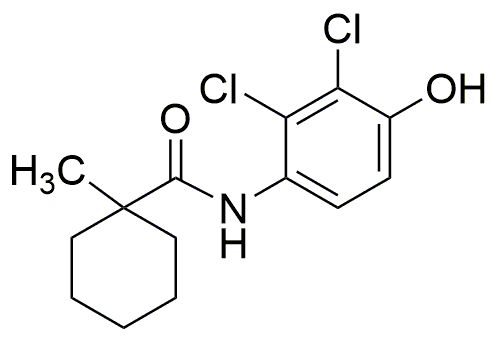Fenhexamid is widely utilized in research focused on:
- Agriculture: Primarily used as a fungicide, it helps protect crops from various fungal diseases, ensuring higher yields and better quality produce.
- Plant Protection: Effective in controlling powdery mildew in crops like grapes and strawberries, it supports sustainable farming practices by reducing the need for more harmful chemicals.
- Research and Development: Utilized in studies aimed at understanding plant-pathogen interactions, aiding researchers in developing more resilient crop varieties.
- Environmental Safety: Its targeted action minimizes the impact on non-target organisms, making it a safer choice for integrated pest management systems.
- Formulation Development: Used in creating innovative agricultural formulations, enhancing the efficacy and stability of pesticide products.
General Information
Properties
Safety and Regulations
Applications
Fenhexamid is widely utilized in research focused on:
- Agriculture: Primarily used as a fungicide, it helps protect crops from various fungal diseases, ensuring higher yields and better quality produce.
- Plant Protection: Effective in controlling powdery mildew in crops like grapes and strawberries, it supports sustainable farming practices by reducing the need for more harmful chemicals.
- Research and Development: Utilized in studies aimed at understanding plant-pathogen interactions, aiding researchers in developing more resilient crop varieties.
- Environmental Safety: Its targeted action minimizes the impact on non-target organisms, making it a safer choice for integrated pest management systems.
- Formulation Development: Used in creating innovative agricultural formulations, enhancing the efficacy and stability of pesticide products.
Documents
Safety Data Sheets (SDS)
The SDS provides comprehensive safety information on handling, storage, and disposal of the product.
Product Specification (PS)
The PS provides a comprehensive breakdown of the product’s properties, including chemical composition, physical state, purity, and storage requirements. It also details acceptable quality ranges and the product's intended applications.
Certificates of Analysis (COA)
Search for Certificates of Analysis (COA) by entering the products Lot Number. Lot and Batch Numbers can be found on a product’s label following the words ‘Lot’ or ‘Batch’.
*Catalog Number
*Lot Number
Certificates Of Origin (COO)
This COO confirms the country where the product was manufactured, and also details the materials and components used in it and whether it is derived from natural, synthetic, or other specific sources. This certificate may be required for customs, trade, and regulatory compliance.
*Catalog Number
*Lot Number
Safety Data Sheets (SDS)
The SDS provides comprehensive safety information on handling, storage, and disposal of the product.
DownloadProduct Specification (PS)
The PS provides a comprehensive breakdown of the product’s properties, including chemical composition, physical state, purity, and storage requirements. It also details acceptable quality ranges and the product's intended applications.
DownloadCertificates of Analysis (COA)
Search for Certificates of Analysis (COA) by entering the products Lot Number. Lot and Batch Numbers can be found on a product’s label following the words ‘Lot’ or ‘Batch’.
*Catalog Number
*Lot Number
Certificates Of Origin (COO)
This COO confirms the country where the product was manufactured, and also details the materials and components used in it and whether it is derived from natural, synthetic, or other specific sources. This certificate may be required for customs, trade, and regulatory compliance.


